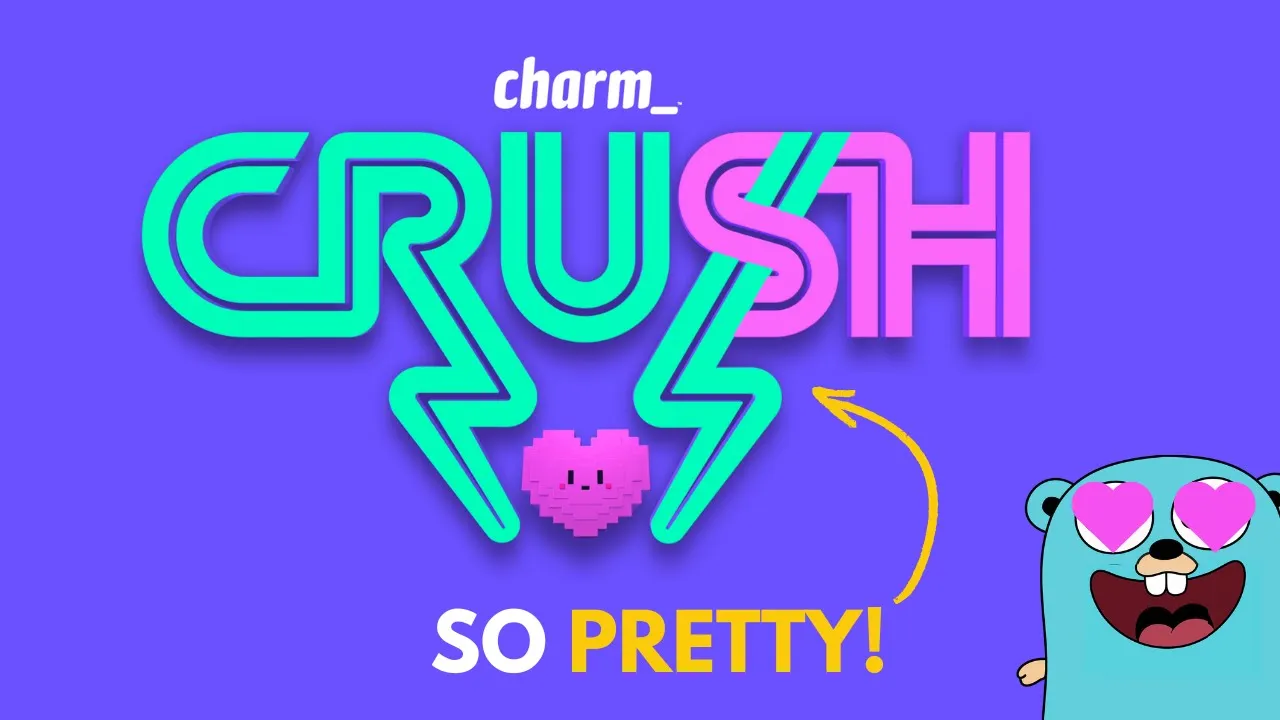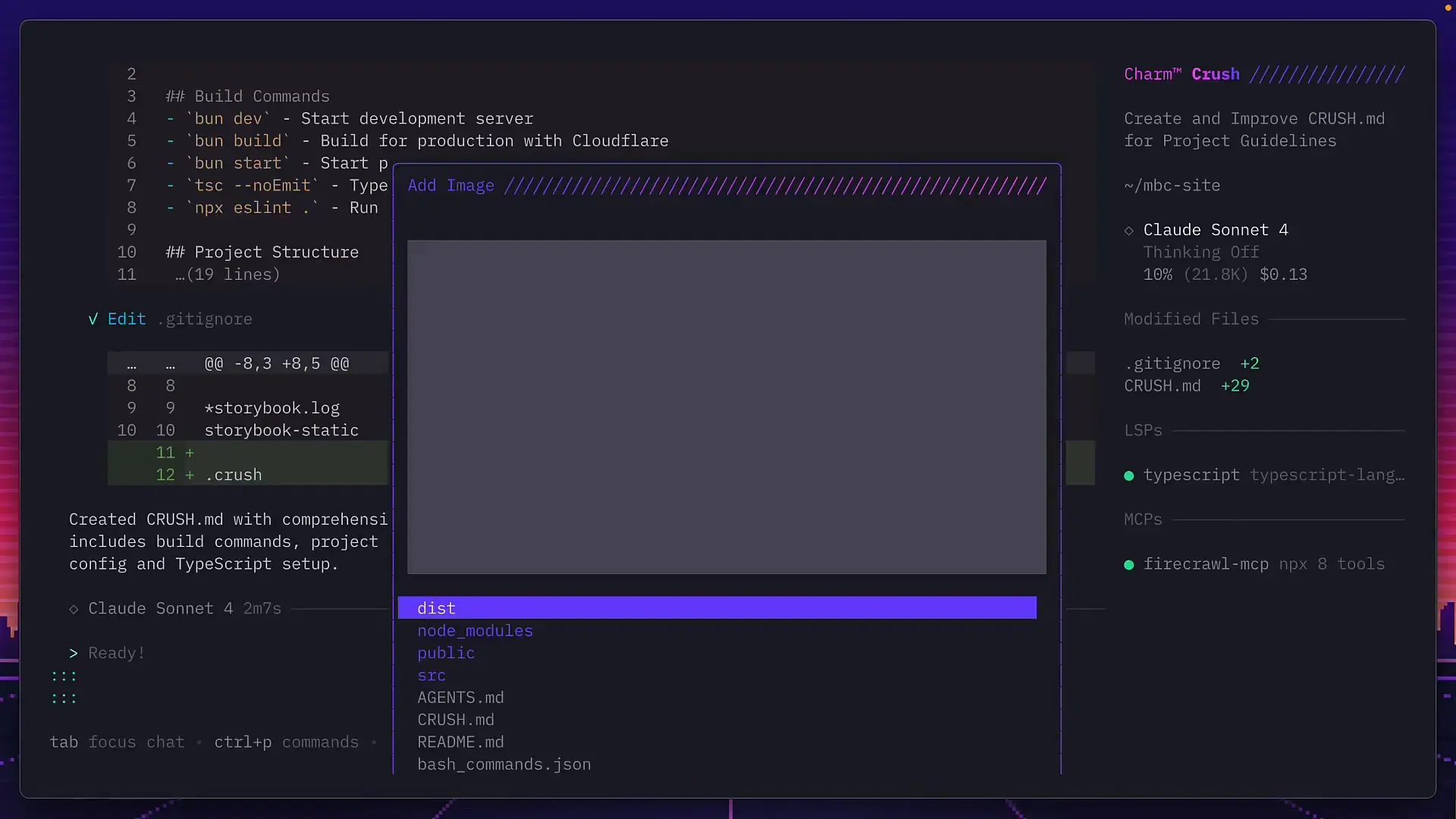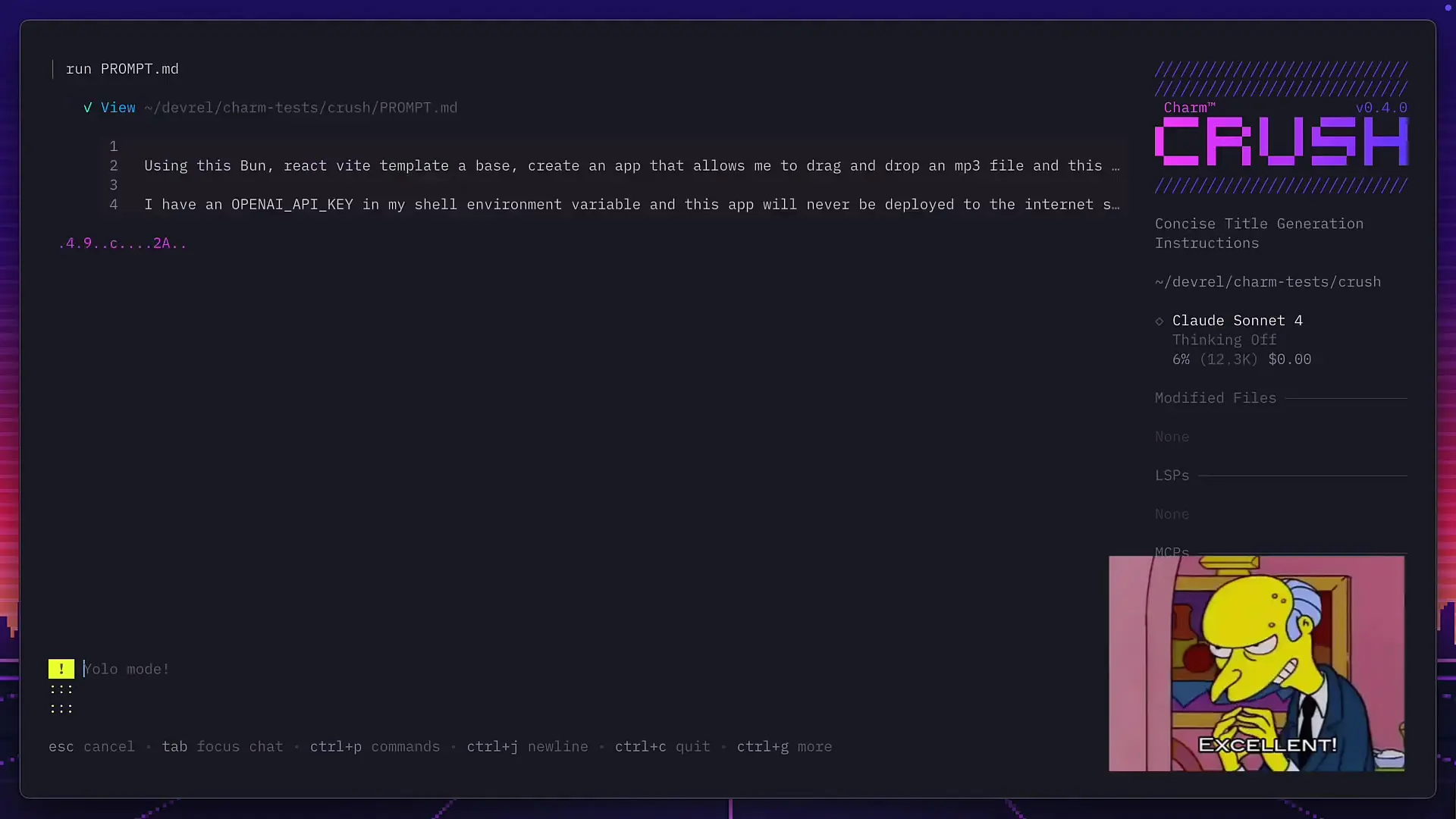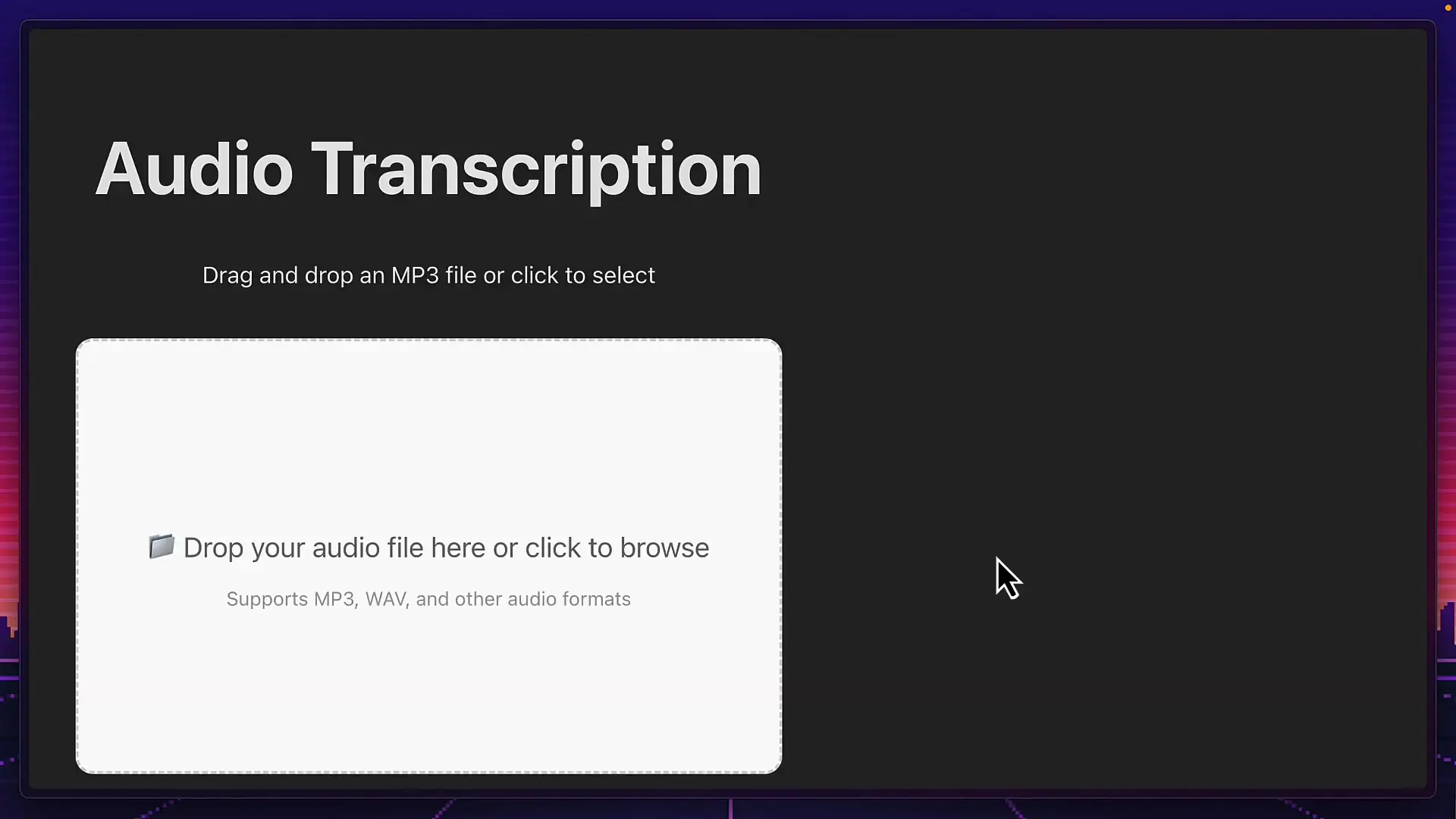
The landscape of AI coding tools is rapidly evolving, with terminal-based assistants gaining popularity among developers seeking efficient coding solutions. Among these tools, Charm's Crush has emerged as a visually appealing option that's competing with established players like Claude Code and Open Code. Let's dive into what makes Crush stand out and whether it can dethrone other AI coding tools in terms of functionality and user experience.
What is Crush? The Background Story
Crush is developed by Charm, a company known for creating beautiful terminal UI tools. It was originally called Open Code, but after some controversy in the developer community, Charm renamed their product to Crush. Meanwhile, SST created a new version of Open Code with a TypeScript backend. This split has created an interesting competitive landscape between these AI coding tools.
Charm's reputation for elegant terminal interfaces is immediately apparent in Crush, from its sleek heading and logo to its smooth loading animations and intuitive model selection interface. The visual appeal alone makes it worth considering for developers who value aesthetics in their tools.
Getting Started with Crush
After installation, Crush can be launched with a simple command. For new projects, it asks to initialize with a Crush.md file. The tool features a clean permission system that requests access before executing commands, enhancing security while maintaining a smooth user experience.
- Install Crush via your package manager
- Open a terminal and navigate to your project directory
- Run the 'crush' command to initialize
- Approve permissions for bash tool access
- Start interacting with the AI coding assistant
The sidebar displays useful information including the session name, selected model, context usage percentage, and pricing. This at-a-glance information helps developers keep track of their resources while working.

Unique Interface Features of Crush
Unlike other AI coding tools that use slash commands, Crush employs Command+P to bring up a modal for various functions. This modal allows users to switch sessions, toggle between large and small task models, and change between system and custom user prompts. The ability to add custom prompts in the commands folder gives developers flexibility in how they interact with the AI.
- Command+P for accessing the command modal
- Ctrl+F to add images with preview functionality
- Ctrl+R followed by index to remove images
- Tab key to switch between prompt and chat areas
- Vim-like navigation in chat (k/j for up/down, gg/G for top/bottom)
One limitation to note is that Crush currently lacks a Vim mode for prompting and only works with API keys rather than subscription services like Claude Pro or Mac subscription. However, it does support adding local models, LSPs, and MCP servers through a crush.json configuration file.
Performance Comparison: Crush vs. Claude Code vs. Open Code
To evaluate Crush's coding capabilities, a test was conducted using the same prompt across Crush, Claude Code, and Open Code. The task involved creating a React Vite application with drag-and-drop functionality for MP3 files, which would then be converted to text transcripts using OpenAI's Whisper API.

All three AI coding tools completed the task in similar timeframes (under two minutes), but with notable differences in their approaches. Crush didn't display a progress checklist like the others did, but it compensated with its useful modified files feature in the sidebar.
- Crush created a functional app with drag-and-drop only functionality
- Open Code's version included both drag-and-drop and click-to-select features
- Claude Code initially encountered a server error but added a loading spinner and hover effects after a follow-up prompt
In terms of code quality and security practices, Claude Code stood out by creating a separate server.js file to protect the API key from front-end exposure. Both Crush and Open Code placed the API key directly in the app.jsx file, which is less secure.

Strengths and Limitations of Crush as an AI Coding Tool
Crush offers several advantages that make it a compelling option among AI coding tools. Its lower memory usage compared to Claude Code and Open Code is notable for developers working on resource-constrained systems. The built-in log viewing capability provides valuable debugging information that enhances the development workflow.
// Example of how Crush might generate a React component for file upload
import React, { useState } from 'react';
import './App.css';
function App() {
const [transcript, setTranscript] = useState('');
const [isProcessing, setIsProcessing] = useState(false);
const handleFileDrop = async (e) => {
e.preventDefault();
const file = e.dataTransfer.files[0];
if (file && file.type === 'audio/mpeg') {
await processAudioFile(file);
}
};
// Whisper API implementation would go here
return (
<div className="container">
<div
className="dropzone"
onDragOver={(e) => e.preventDefault()}
onDrop={handleFileDrop}
>
Drop MP3 file here
</div>
{isProcessing && <p>Processing audio...</p>}
{transcript && (
<div className="transcript">
<h3>Transcript:</h3>
<p>{transcript}</p>
</div>
)}
</div>
);
}However, Crush does lag behind its competitors in certain areas. It currently lacks custom hooks or plugins, has no support for custom sub-agents or agents, and doesn't include built-in formatters. These limitations may impact developers who rely on these features for more complex projects.
When to Choose Crush as Your AI Code Helper
Crush excels as an AI tool for code writing in specific scenarios. Its elegant interface and efficient resource usage make it ideal for developers who prioritize aesthetics and performance on lower-spec machines. The tool is particularly well-suited for straightforward coding tasks where its streamlined approach can shine.
- When working on machines with limited resources
- For developers who value clean, intuitive terminal interfaces
- When basic AI coding assistance is needed without complex agent systems
- For teams already familiar with other Charm terminal tools
- When detailed logs and modified files tracking are important to the workflow
For developers working on projects requiring advanced features like custom agents or extensive formatting options, Claude Code or Open Code might still be the better choice. However, Crush's ongoing development suggests that feature parity could be achieved in future updates.
Conclusion: Is Crush the Future of AI Coding Tools?
Crush represents an impressive entry in the growing field of AI coding tools. Its beautiful interface and efficient performance demonstrate Charm's expertise in creating terminal applications. While it may not yet have all the features of its competitors, its foundation is solid and shows tremendous potential.
The competition between Crush, Claude Code, and Open Code ultimately benefits developers, as each tool continues to innovate and improve. For those who value aesthetics and efficiency in their AI code helpers, Crush deserves serious consideration. As these tools evolve, the choice between them will likely come down to specific project requirements and personal preferences rather than clear technical superiority.
Whether Crush will dethrone other AI coding tools remains to be seen, but its strong entry into the market ensures that developers have access to increasingly sophisticated AI assistance for their coding projects.
Let's Watch!
Crush vs Claude Code: Battle of AI Coding Tools Explained
Ready to enhance your neural network?
Access our quantum knowledge cores and upgrade your programming abilities.
Initialize Training Sequence